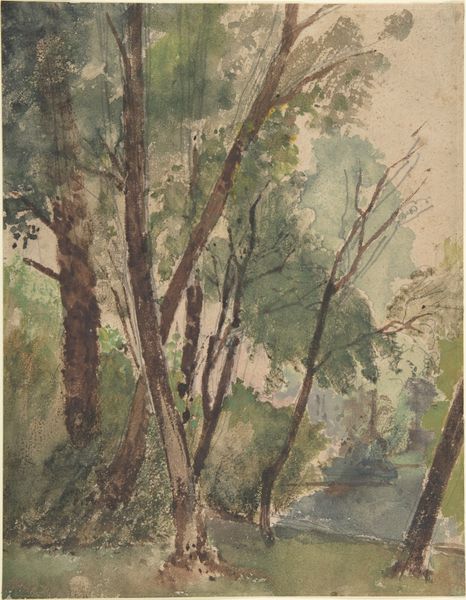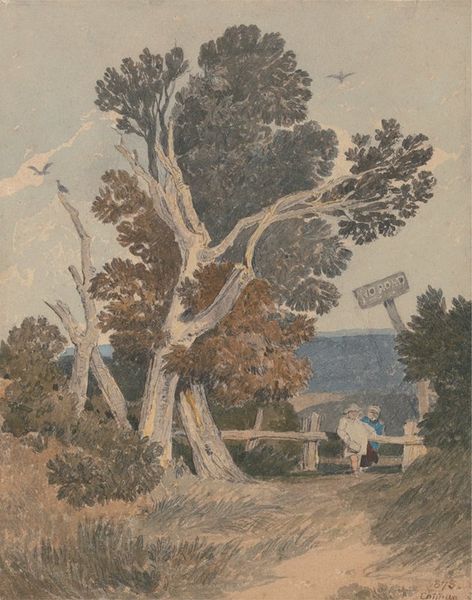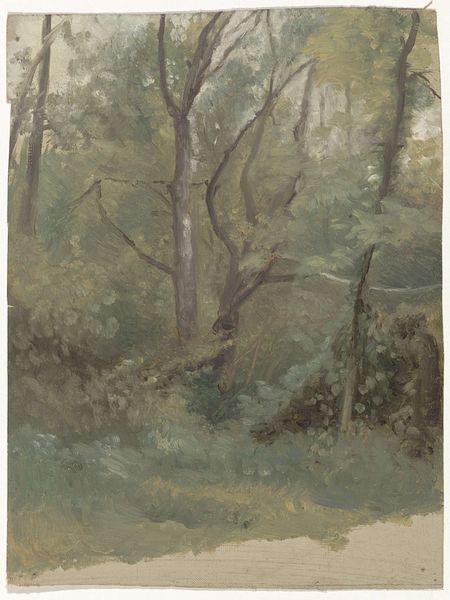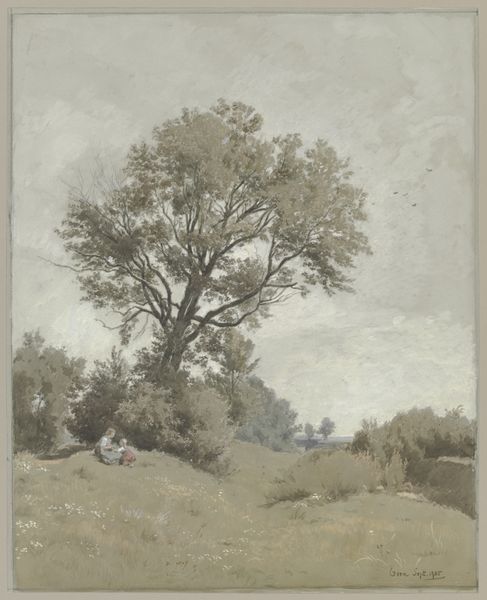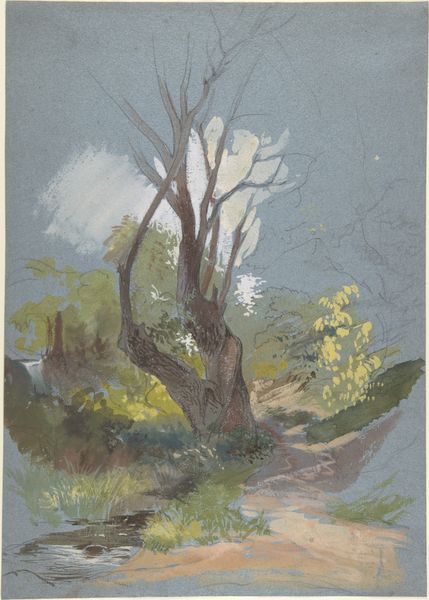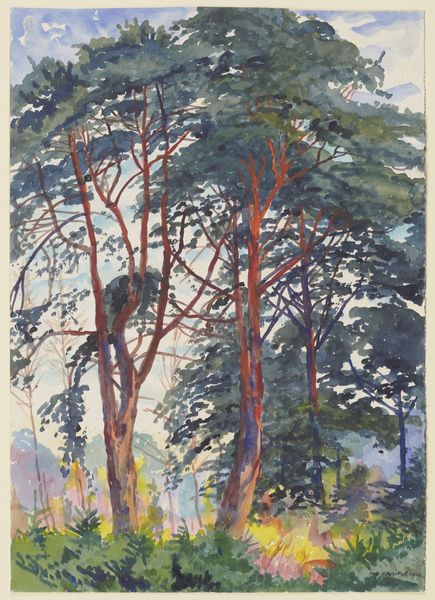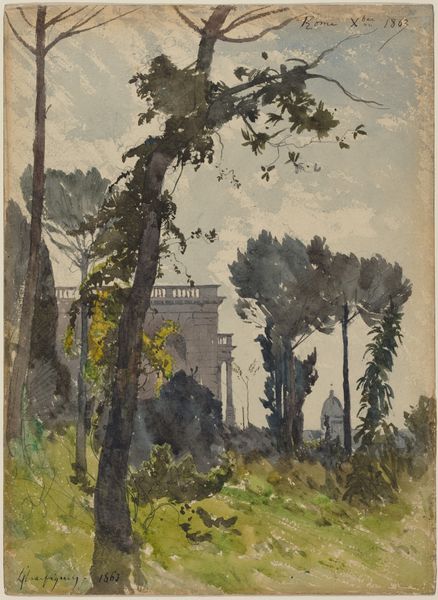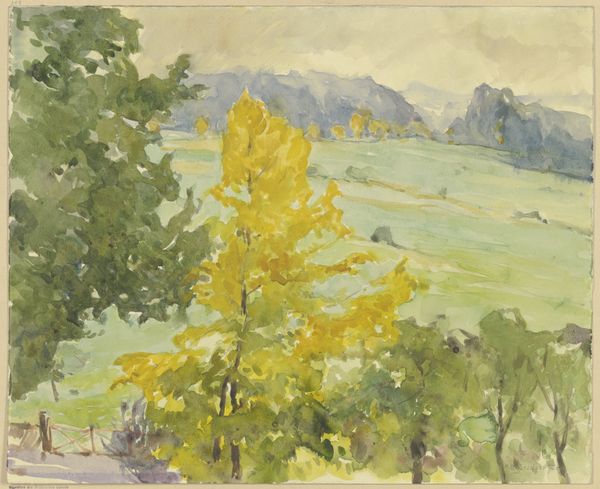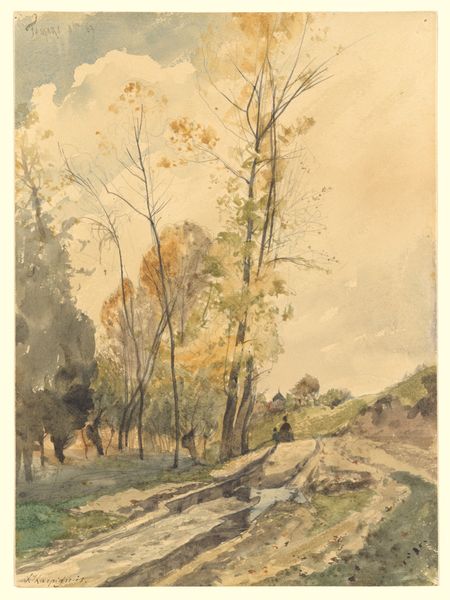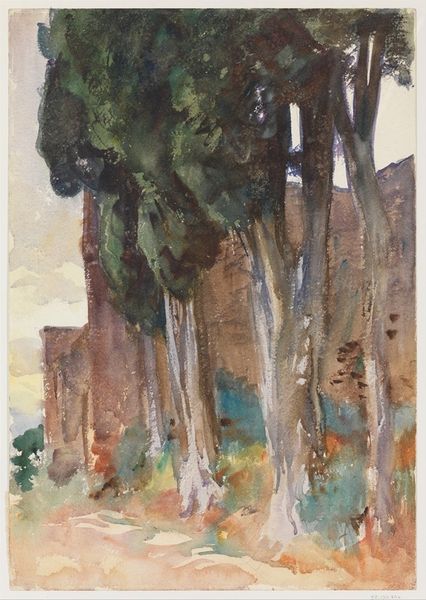
Dimensions: Overall: 11 1/16 x 7 13/16in. (28.1 x 19.8cm) frame: 21 x 16 in. (53.3 cm)
Copyright: Public Domain
Curator: Henri-Joseph Harpignies' watercolor, simply titled "Landscape," created around 1900, presents us with a serene vista. It is now held here at the Metropolitan Museum of Art. What are your immediate impressions? Editor: A stillness, certainly. The light is soft, almost muted, and the palette creates a quiet, contemplative mood. There’s an interesting contrast between the delicate washes and the fairly dense vegetation. Curator: Yes, the hazy quality is striking. Harpignies was known for working "en plein air," directly from nature, and you see it in his observation of light, particularly as it filters through the foliage. It's interesting to me how the work resonates with a sense of timelessness even while being very much of its Impressionistic moment. The trees almost seem to function as symbols of endurance. Editor: I see that, but I also wonder about the societal role of such landscapes at the turn of the century. As industrialization rapidly changed the French landscape, images like these offered a comforting, perhaps even nostalgic, vision of an unspoiled natural world. It feels politically charged in that respect, as a reminder of what was being lost. Curator: That’s a valid point. Landscape imagery was indeed frequently loaded with socio-political commentary, even implicitly. Thinking about the trees again, the symbolism may be complex. We're shown nature, yet its carefully framed – shaped and thus brought under societal and aesthetic control. Editor: Absolutely, the hand of the artist is always present, shaping our view. And if we look closer, beyond the sentimentality, is there an appeal for protecting nature? Does the symbolism change depending on when the art is received by audiences? Curator: It is a call and a caution – how do we maintain a balanced relationship with the natural world that isn't merely about aesthetics, and more concerned about preservation? These are concerns echoed into today. Editor: Very well. So, in short, while on first glance this artwork gives us quiet rest, underneath lies subtle social commentary and ecological reflection. Curator: Indeed, its delicate surfaces belie its resonance even to modern contexts.
Comments
No comments
Be the first to comment and join the conversation on the ultimate creative platform.
